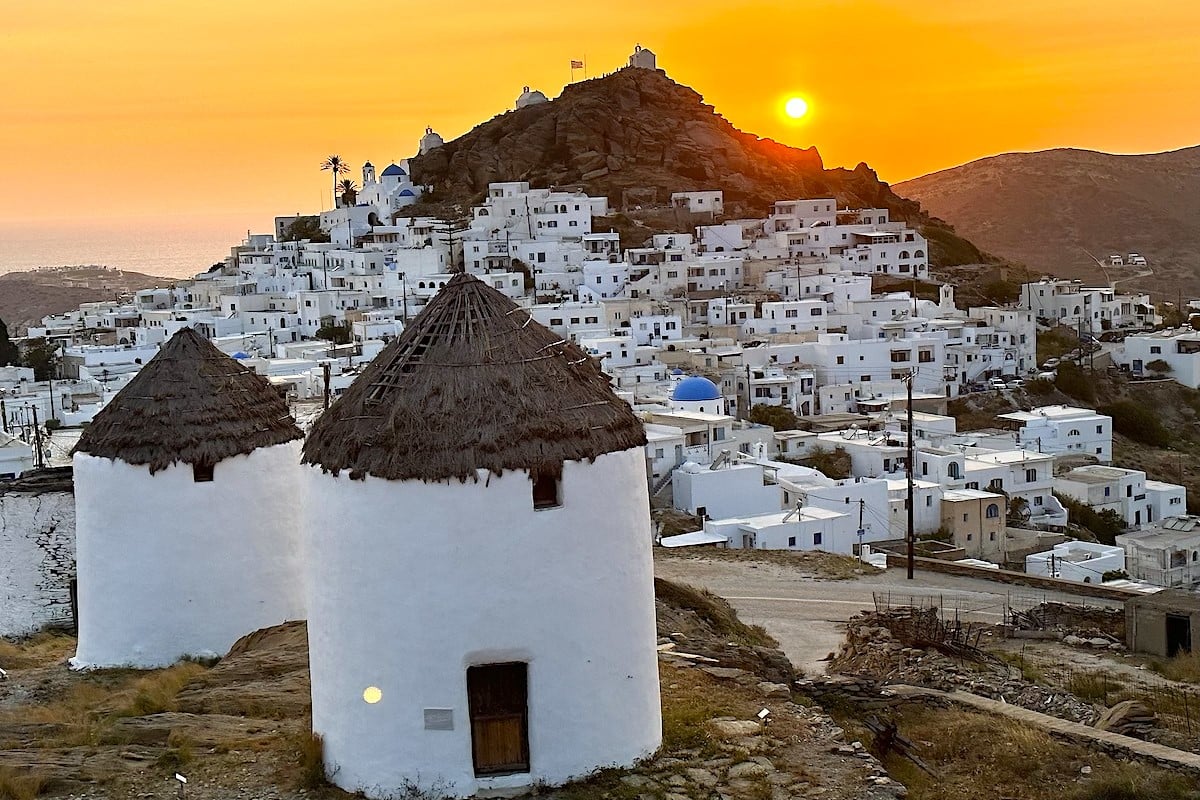
The Greek island of Ios, or Nios as locals call it, is a charming Cycladic island renowned among the young for its vivid nightlife.
It is located between Santorini, Paros and Naxos islands and offers a plethora of lovely bays and beaches.
The Port of Ios is at the head of the Ormos harbor in the northwest. There is a path up the nearby hill to Chora, named after the Greek word for the main village on an island.
Chora is a white Cycladic village, full of stairs and narrow paths that make it inaccessible for cars.
Today, the main path through this village is completely taken over by tourism with restaurants, boutiques, bars and discothèques catering to visitors.
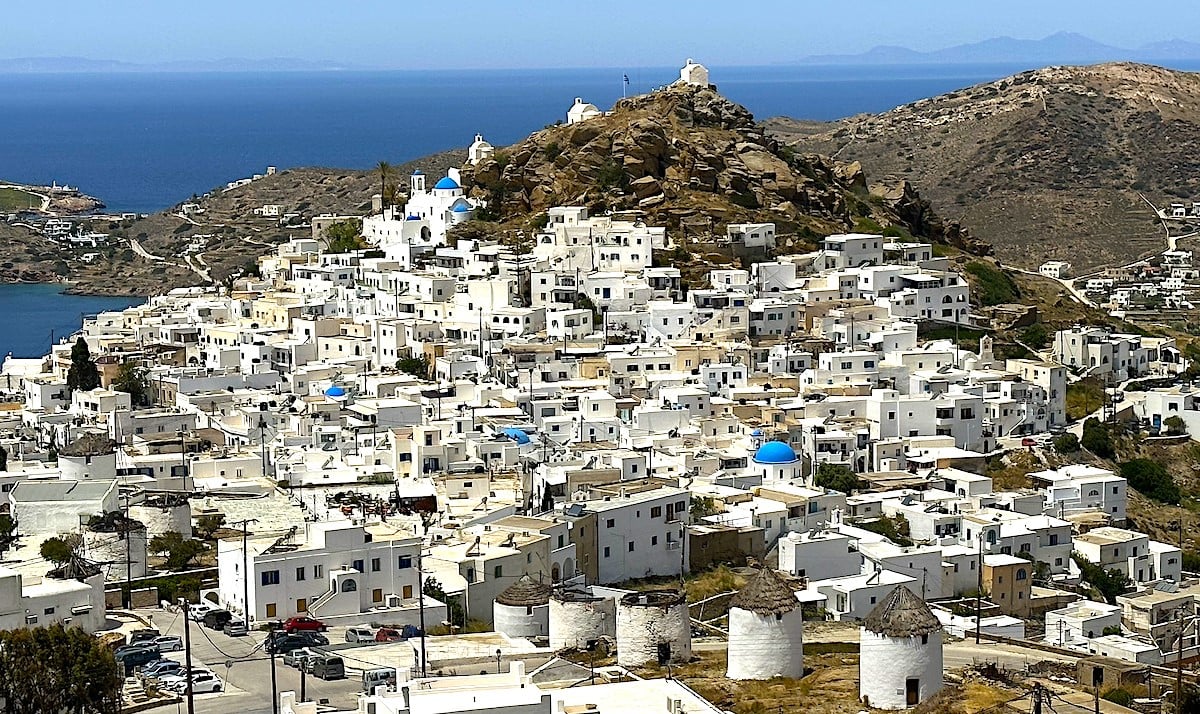
To enjoy the beauty and charms of Chora, it is better to wander around its magical streets during daylight hours when most of the crowd are lying on the beaches, the bars closed and the locals out of their houses.
The breathtaking view from Panaghia Gremiotissa, the highest spot of the village, is worth seeing and truly unforgettable, especially during the amazing sunset.
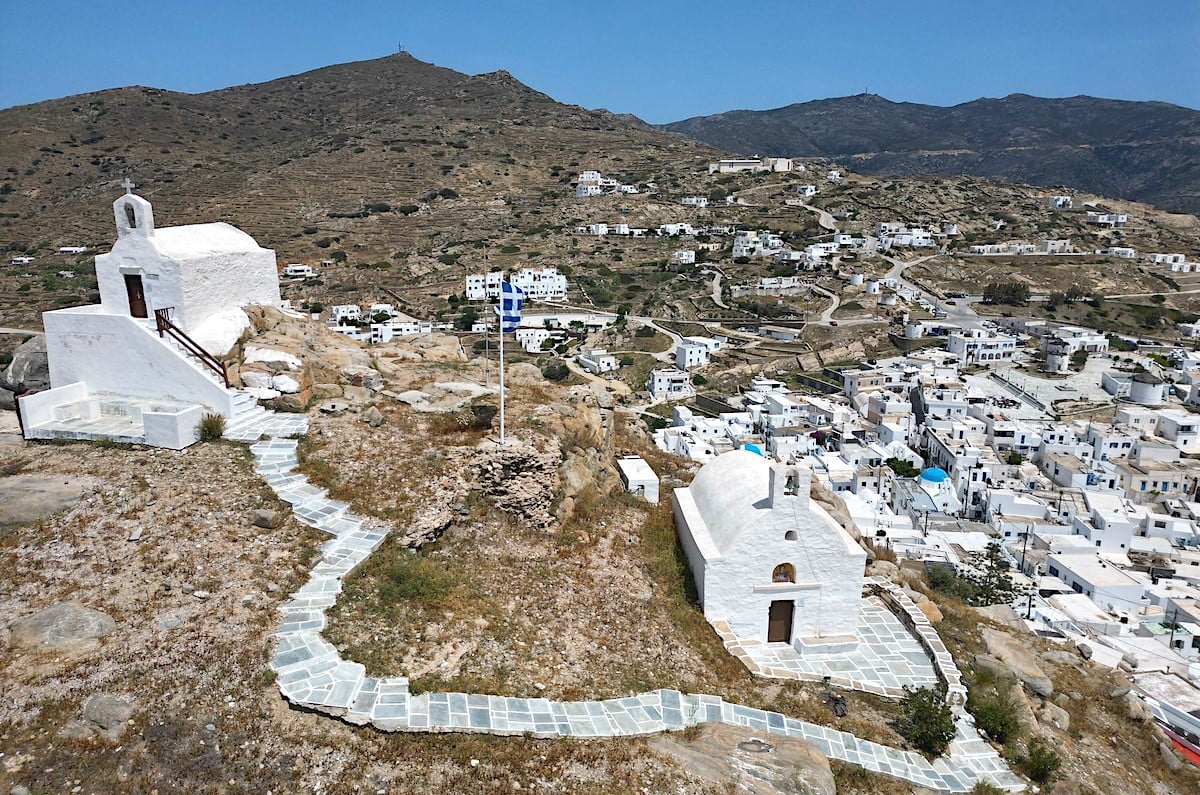
Behind the beautiful whitewashed windmills is the outdoor amphitheater Odysseas Elytis (a famous Greek poet), where concerts and plays are performed during summer.
The ruins of the Venetian castle which lie on the top of the hill and overlook the village are also very interesting to see.
Despite the great number of tourists and the frenetic nightlife, Chora has kept its traditional character and colors, as it has been proclaimed a preserved settlement.
Apart from the port and the village of Chora, Ios has a few small settlements that consist of groups of spread-out houses to the back of major beaches.
Beaches on Ios Island
This gem of an island in the Cyclades is about more than nightlife and a party atmosphere. It’s also home to outstanding beaches. Whether it’s water sports or chilled and relaxed beach time, Ios has beaches for every holiday style.
Most are sandy, and there are hidden gems and off-grid stunners as well as cosmopolitan hangouts where you can lie back and soak it all up.
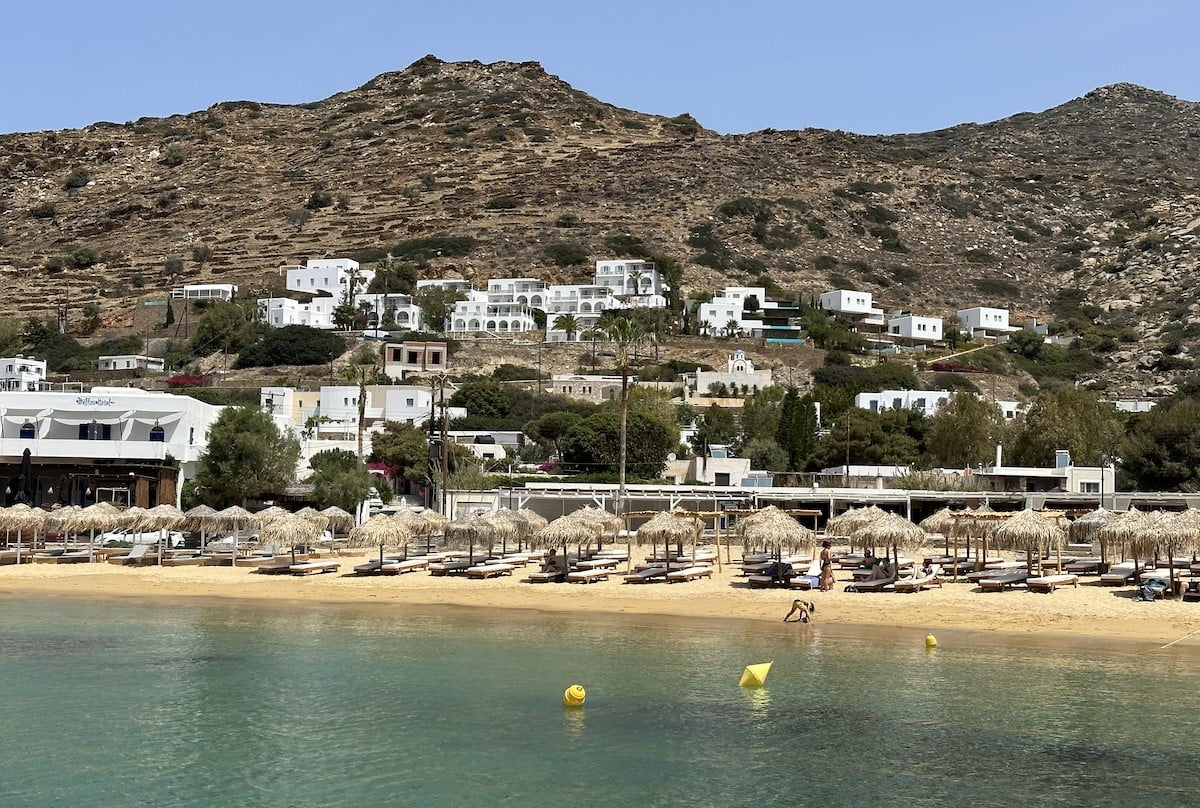
Mylopotas is the best-known beach in Ios, famous for its party vibe and easy access (only 2km) from Hora (the main town). And it’s hardly surprising, given the beach bars and choice of nearby tavernas and shops, not to mention the water sports options, including a diving center.
W-shaped Manganari is one the most beautiful beaches in Ios, something that immediately becomes apparent as you approach it by car from the highest point of the island. It’s a long, double-fronted beach and is the second-most popular in Ios.
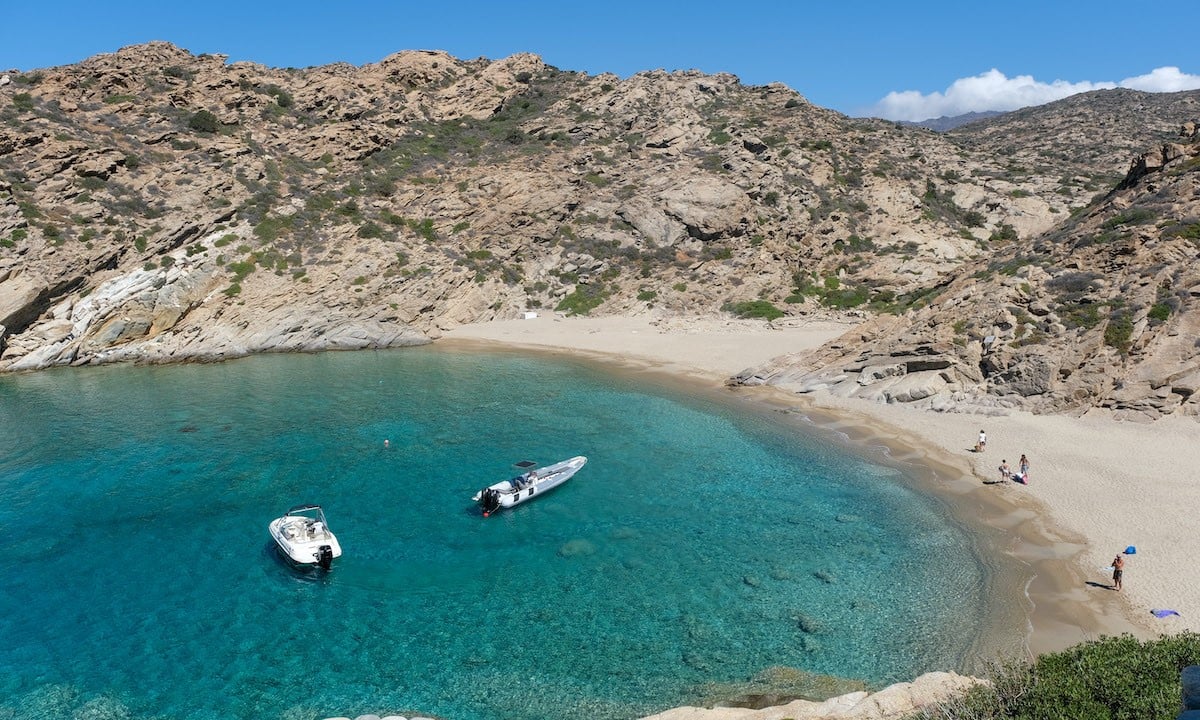
Other beaches on Ios include Agia Theodoti, Gialos, Koumbara and Loretzaina which is tucked away inside a rocky, windless cove.
There is said to be a church for every day of the year in Ios. They are dotted on the hillsides, in town and overlooking the ocean. Keep an eye out for the smaller churches, some not even a meter tall, that are tucked away on the island.
Given the small size of the island itself, no matter which way you walk you’re guaranteed to pass a couple of these gorgeous churches. They are maintained and regularly painted by the local people.
Ios: Final Resting place of Homer?

Legend has it that the island of Ios was where Homer took his last breath and that now he lies in his grave on a hill at Plakoto, in the northernmost part of the island.
While it has never been proven to be his final resting place, there are a number of inscriptions and coins that document the birth of Homer’s mother on Ios and help to validate the claim.
The drive to the ruins winds through many picturesque mountains that overlook hidden coves and beaches, and it’s definitely a recommended spot for a visit.
An early Bronze Age settlement found in Ios is Skarkos. It is the most important prehistoric archaeological site of the Cyclades, located only a few kilometers from the port of Ios, and about one thousand years older than the famous Akrotiri of Santorini.
Skarkos provided archaeologists with important information and significant evidence on how societies were organized in the Cyclades during this period. It was built in a circular shape and at a high altitude so that its residents could overlook the port and the sea.
According to ancient Greek historian Plutarch, it is thought that the name of the island derived from the Ancient Greek word for violets “Ία”(Ia) because they were commonly found on the island. This is the most accepted etymology.
It is also posited that the name was derived from the Phoenician word iion, meaning “pile of stones”.